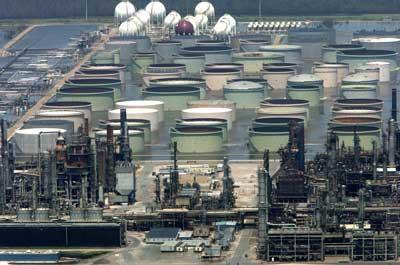
PRICES DECLINES RESERVES

According to annual reports for 75 global oil and natural gas companies, oil proved reserve additions totaled 10.4 billion barrels in 2014, the lowest since 2010 (Figure 1). Reported finding and lifting costs for these companies continued to rise. Benchmark prices averaged across the first trading day of the 12 months of 2014, which are used in characterizing existing economic conditions in the oil market for purposes of reporting proved reserves, were only slightly below their 2013 level despite the sharp decline in oil prices towards the end of last year. For 2015, the prices used for assessing proved reserves are forecast to be much lower.
Oil and natural gas companies listed on U.S. stock exchanges are required to report their proved reserves every year to the U.S. Securities and Exchange Commission (SEC). Proved reserves are defined as estimated quantities of oil and natural gas that analysis of geologic and engineering data demonstrates with reasonable certainty are recoverable under existing economic and operating conditions. Because prices affect the economics of exploration and production, price changes can have a significant effect on companies' proved reserves and the amount of reserves they can claim as additions. The SEC requires companies to value proved reserves based on the average of the prices of a crude benchmark on the first day of each month for the year. Using, for example, front month West Texas Intermediate (WTI) futures closing prices for the first trading day in each month of 2014, this value was $94.42 per barrel (bbl), 3% below the average for 2013.
While adding to a company's resource base may improve its long-term ability to maintain or grow the business, stakeholders also have an interest in the cost per barrel of adding these reserves as well as the costs of production from a company's proved reserves. The SEC requires companies to publish costs incurred for exploration and development activity—that is, activity associated with finding new reserves—as well as the costs necessary to bring oil and gas to market, also called lifting costs. Figure 2 shows finding and lifting costs for this set of companies, with 2014's finding costs increasing $2.92 per barrel of oil equivalent (boe) and lifting costs decreasing $1.13/boe. Finding costs are typically defined as the sum of expenditures on property acquisition with unproved reserves, exploration activity, and development activity divided by oil and natural gas reserve additions. Lifting costs are the ratio of production expenditures to the volume of annual production.
The total dollars spent on exploration and development activity declined in 2014 for the first time since 2009 as companies reduced capital expenditures in the second half of the year, but a steeper decline in reserve additions caused an increase in the finding cost per barrel of oil equivalent. A similar situation occurred in 2012 as low natural gas prices significantly reduced reserve additions for that year and contributed to a substantial increase in finding costs. Each year can show considerable differences because of volatile price movements or changing market conditions. Using a three-year moving average smoothes out a single year's effect and provides a better indication of the overall trend in the cost of finding and extracting oil and gas. The three-year moving average for finding and lifting costs has increased every year since 2011.
Nearly a third of the way through 2015, the price environment for valuing proved reserves is considerably different from recent years for oil and gas companies. The first-of-the-month average price for WTI in 2015 to date is $50.49/bbl, a 47% decline from the 2014 price. This could result in reduced proved reserve additions and possibly some reduction in previously identified proved reserves for 2015 because some projects would become uneconomic. Finding and lifting costs, however, could decrease, as companies are significantly reducing capital expenditures compared to previous years given the uncertain investment outlook.
U.S. gasoline prices mixed, diesel fuel prices decrease
The U.S. average retail price for regular gasoline decreased by half a cent from last week to remain at $2.41 per gallon as of April 13, 2015, $1.24 per gallon less than at the same time last year. The Rocky Mountain price increased three cents to $2.35 per gallon, and the Gulf Coast price rose one cent to $2.19 per gallon. The East Coast price increased by less than a cent to $2.36 per gallon. The West Coast price decreased three cents to $2.92 per gallon, while the Midwest price was down a penny to $2.30 per gallon.
The U.S. average price of diesel fuel decreased three cents from the week prior to $2.75 per gallon, $1.20 less than a year ago. The Midwest price fell four cents to $2.63 per gallon, followed by the East Coast price, which was down three cents to $2.92 per gallon. The Gulf Coast and Rocky Mountain prices each fell two cents, to $2.62 per gallon and $2.70 per gallon, respectively. The West Coast price decreased by less than a cent to remain at $2.91 per gallon.
Propane inventories gain
U.S. propane stocks increased by 2.1 million barrels last week to 60.0 million barrels as of April 10, 2015, 31.7 million barrels (111.6%) higher than a year ago. Midwest inventories increased by 0.9 million barrels and Gulf Coast inventories increased by 0.6 million barrels. East Coast inventories increased by 0.5 million barrels while Rocky Mountain/West Coast inventories remained unchanged. Propylene non-fuel-use inventories represented 7.6% of total propane inventories.
eia.gov







